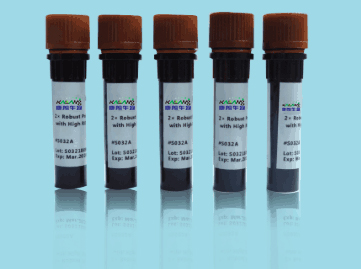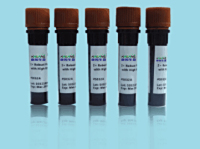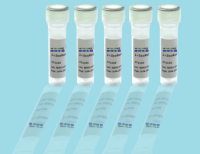

客服电话:021-61998208


Anti M13 G8P-HRP mouse monoclonal antibody
Anti M13 G8P-HRP mouse monoclonal antibody
应用:ELISA:1:2000-1:8000,optimal working dilutions must be determined by end user.
产品名(Product Name)
Anti M13 G8P-HRP mouse monoclonal antibody
货号(Catalog No.)
KL-10096Mo
种类(Category)
Primary antibody
宿主(Host)
Mouse
反应种属(Species specificity)
Recognizes M13 Bacteriophage
克隆性(Clonality)
Monoclonal
克隆编号(Clone No.)
3G2
偶连物(Conjugation)
Unconjugated
免疫原(Immunogen)
M13 Bacteriophage
别名
VIII
Uniprot ID
P69541
状态(Form)
Liquid
储存溶液(Buffer)
Supplied as solution form in PBS, pH7.4, containing 0.02% NaN3, 50% glycerol.
存放条件(Storage)
Use a manual defrost freezer and avoid repeated freeze thaw cycles.
Store at 4 °C for frequent use.
Store at -20 to -80 °C for twelve months from the date of receipt.
浓度(Concentration)
0.5mg/ml
亚型(Isotype)
IgG1
分子量(MW)
7kDa
纯化方式(Purity)
Protein G purified from mice ascites
产品背景:M13 is a filamentous bacteriophage composed of circular single stranded DNA (ssDNA) which is 647 nucleotides long encapsulated in approximately 27 copies of the major coat protein P8, and capped with 5 copies of two different minor coat proteins (P9, P6, P3) on the ends. Infection with filamentous phages is not lethal, however the infection causes turbid plaques in E. coli. It is a non-lytic virus. However a decrease in the rate of cell growth is seen in the infected cells. M13 plasmids are used for many recombinant DNA processes, and the virus has also been studied for its uses in nanostructures and nanotechnology. The phage coat is primarily assembled from a 5 amino acid protein called pVIII (or p8), which is encoded by gene VIII (or g8) in the phage genome. For a wild type M13 particle, it takes about approximately 27 copies of p8 to make the coat about 9 nm long. The coat's dimensions are flexible though and the number of p8 copies adjusts to accommodate the size of the single stranded genome it packages. The general stages to a viral life cycle are: infection, replication of the viral genome, assembly of new viral particles and then release of the progeny particles from the host. Filamentous phage use a bacterial structure known as the F pilus to infect E. coli, with the M13 p3 tip contacting the TolA protein on the bacterial pilus. The phage genome is then transferred to the cytoplasm of the bacterial cell where resident proteins convert the single stranded DNA genome to a double stranded replicative form.
特别提示:本公司的所有产品仅可用于科研实验,严禁用于临床医疗及其他非科研用途!








